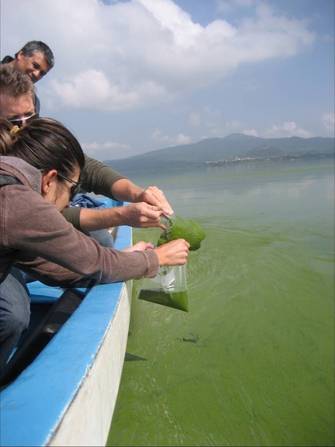
Citation
Chislock, M. F., E. Doster, R. A. Zitomer, and A. E. Wilson. 2013. Eutrophication: Causes, consequences, and controls in aquatic ecosystems. Nature Education Knowledge 4(4):10.
Abstract
Eutrophication is characterized by excessive plant and algal growth due to the increased availability of one or more limiting growth factors needed for photosynthesis (Schindler 2006), such as sunlight, carbon dioxide, and nutrient fertilizers. Eutrophication occurs naturally over centuries as lakes age and are filled in with sediments (Carpenter 1981). However, human activities have accelerated the rate and extent of eutrophication through both point-source discharges and non-point loadings of limiting nutrients, such as nitrogen and phosphorus, into aquatic ecosystems (i.e., cultural eutrophication), with dramatic consequences for drinking water sources, fisheries, and recreational water bodies (Carpenter et al. 1998). For example, aquaculture scientists and pond managers often intentionally eutrophy water bodies by adding fertilizers to enhance primary productivity and increase the density and biomass of recreationally and economically important fishes (Figure 1) via bottom-up effects on higher trophic levels (Boyd & Tucker 1998). However, during the 1960s and 1970s, scientists linked algal blooms to nutrient enrichment resulting from anthropogenic activities such as agriculture, industry, and sewage disposal (Schindler 1974). The known consequences of cultural eutrophication include blooms of blue-green algae (i.e., cyanobacteria, Figure 2), tainted drinking water supplies, degradation of recreational opportunities, and hypoxia. The estimated cost of damage mediated by eutrophication in the U.S. alone is approximately $2.2 billion annually (Dodds et al. 2009).